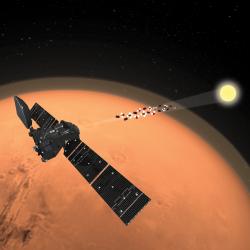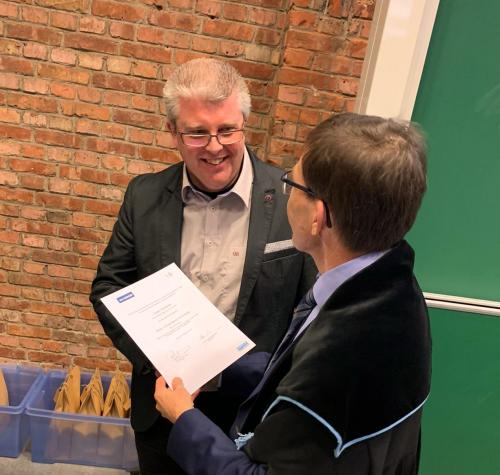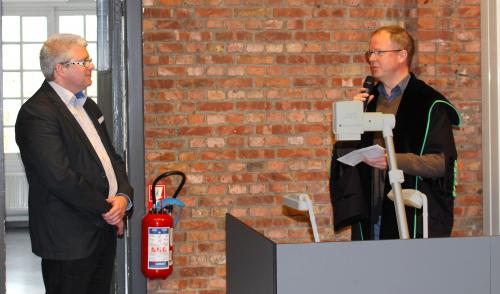February 20 was a big day for one of our engineers! Jurgen Vanhamel completed his PhD! Jurgen’s PhD project was a collaboration between BIRA-IASB and KU Leuven, and was partially based on the ALTIUS-project (Atmospheric Limb Tracker for the Investigation of the Upcoming Stratosphere).
The ALTIUS instrument will measure in the visible, near-infrared and ultraviolet spectral domain. In the visible and near-infrared channel an AOTF (Acousto-Optical Tunable Filter) will be used for the selection of the appropriate optical wavelength. An AOTF is based on a birefringent crystal that gets an amplified Radio Frequency (RF) signal injected via a transducer. The latter converts the RF energy into soundwaves, creating an optical filter effect in the crystal. Based on different models found in literature, a theoretical transducer concept, together with a properly matched external impedance network, is calculated and simulated in his study. Also the relationship between the optical diffraction efficiency and electrical bandwidth of the impedance matching network is examined.
Depending on the optical range (visible, near-infrared or ultraviolet), RF frequencies from 40 MHz up to 250 MHz are needed to drive the AOTFs. Qualified RF generation techniques available today for space applications, are not capable of generating frequencies exceeding 200 MHz. In this work, an in-depth trade-off study is performed of different RF generator techniques, taking into account the technical requirements for ALTIUS.
For the visible and near-infrared channel, low-power space grade control electronics to drive the AOTFs are developed, each with their own specifications for resolution, sensitivity, frequency range, electrical and optical performance. Also, the investigation on how to develop a high frequency RF chain in the ultraviolet for space flight is interesting as this could be useful for future (space) applications, and it is thus described.
All three RF systems are developed such that they can survive multiple years in a space environment (temperature, radiation, vibrations, EMI/EMC-demands). To achieve this, specific Electrical, Electronic and Electro-mechanical (EEE) components have been selected.
Besides ALTIUS, the designed RF driving systems, and especially the UV RF chain, are also interesting for other (space) projects. In Jurgen Vanhamel's work, four additional applications are discussed, three of which can be transformed to space qualified instruments on short notice.
The concept of using an AOTF in a spectrum imager in space applications is innovative. The development of suitable RF systems implies some technological challenges and/or difficulties such as high frequencies, broad frequency spectrum, limited power, stability and quality of the generated signal and temperature control. All these challenges have been tackled effectively and are discussed extensively in his work.



